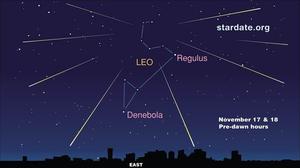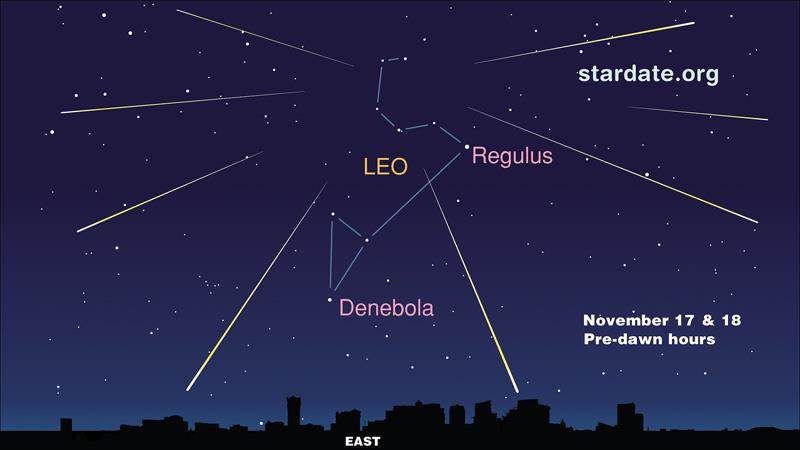The Leonids can sometimes be a spectacular show, with one storm in 1833 producing a reported 100,000 meteors per hour. Tonight’s show should bring about 10 to 15 meteors per hour.
A meteor shower will happen when the Earth flies through a trail of debris from a comet. These particular meteorites are leftovers from Tempel-Tuttle, a comet that orbits the sun every 33 years. The comet left behind dust and debris which will enter the Earth’s atmosphere and burn up, creating the show.
The meteor shower will be centered on the constellation Leo, hence the name, which will be to the east after midnight. However, meteors should be visible anywhere in the sky where it’s dark and there are no clouds blocking visibility.
The best time to view the meteor shower with the naked eye is between midnight and dawn.
 The Slooh Community Observatory, which operates telescopes around the world, will offer a live online show of the Leonid meteor shower beginning at 8:00 p.m. EST for those who don’t want to go outside or live in a city with a lot of light pollution. You can watch the show when it begins here.
The Slooh Community Observatory, which operates telescopes around the world, will offer a live online show of the Leonid meteor shower beginning at 8:00 p.m. EST for those who don’t want to go outside or live in a city with a lot of light pollution. You can watch the show when it begins here.
That will be welcome news to those who don’t want to go outside to witness the spectacular show. It’s going to be a chilly November night, but for those who are willing to brave the cold, they can witness the Leonid meteor shower at its peak, according to Wired.com.
The Slooh Space Camera will begin broadcasting from its Canary Islands observatory, a Spanish territory off the coast of northwestern Africa. It will move to the Prescott OBservatory in Arizona later in the evening to follow the light show.

